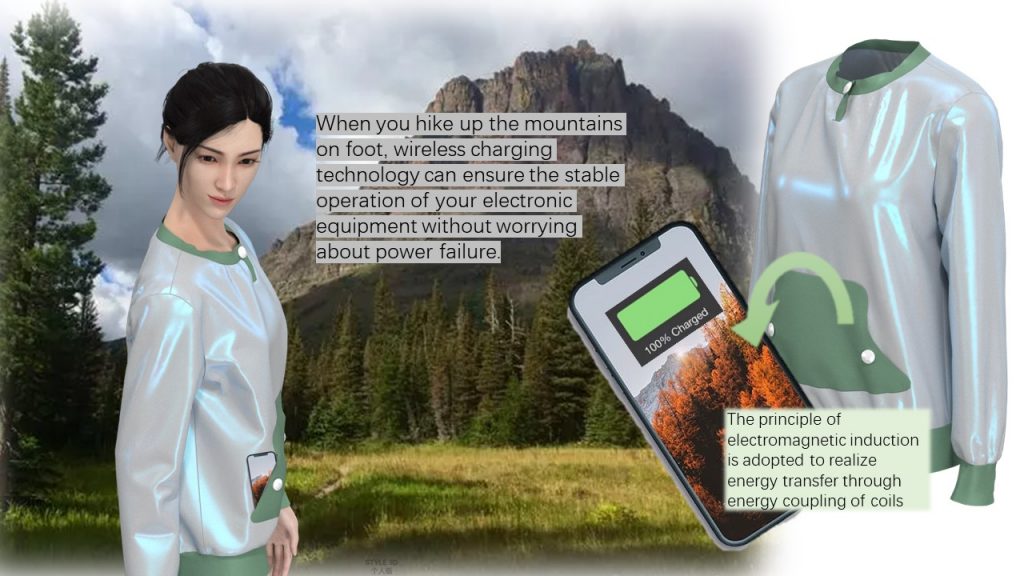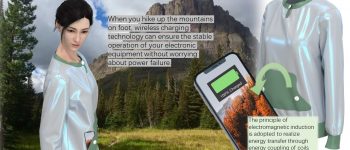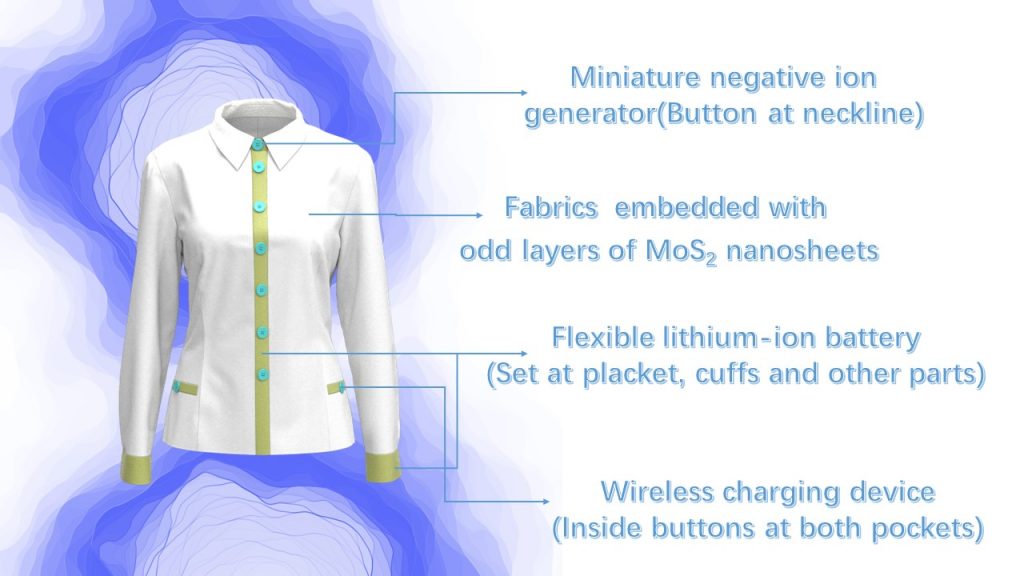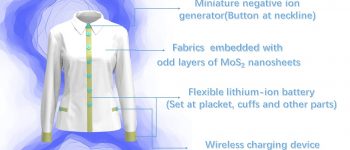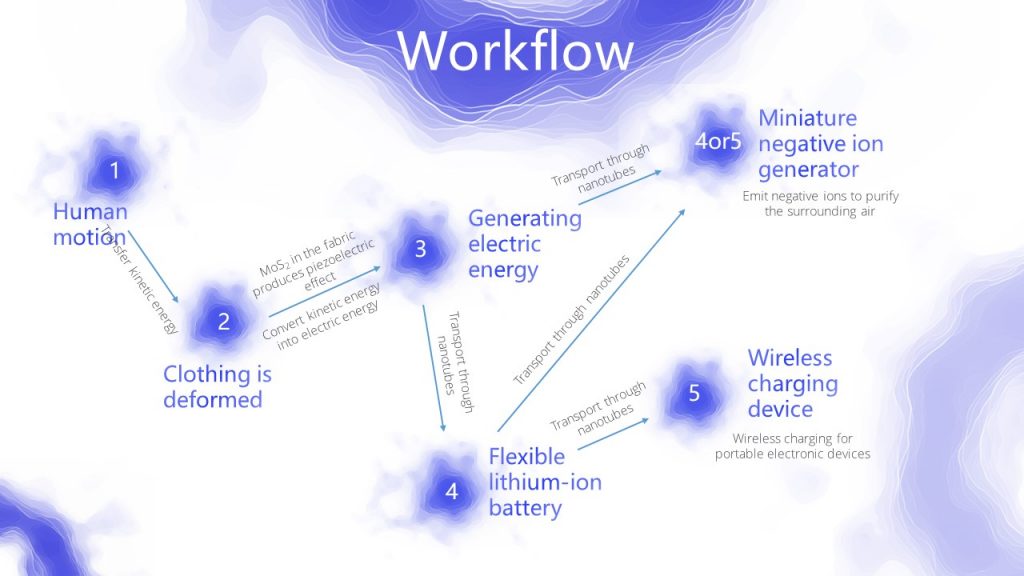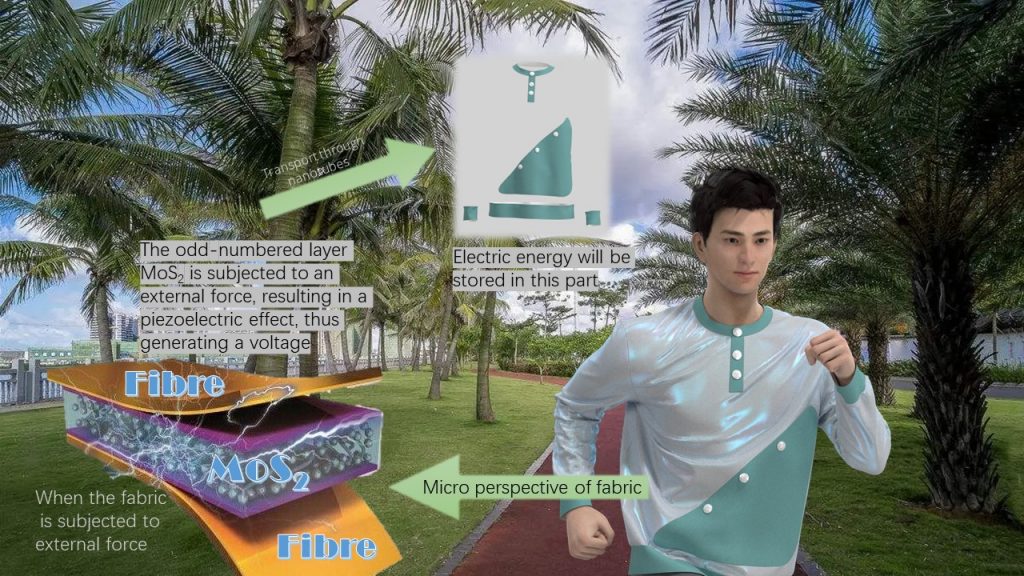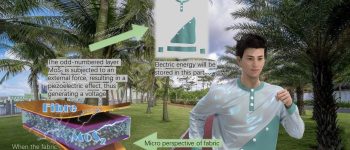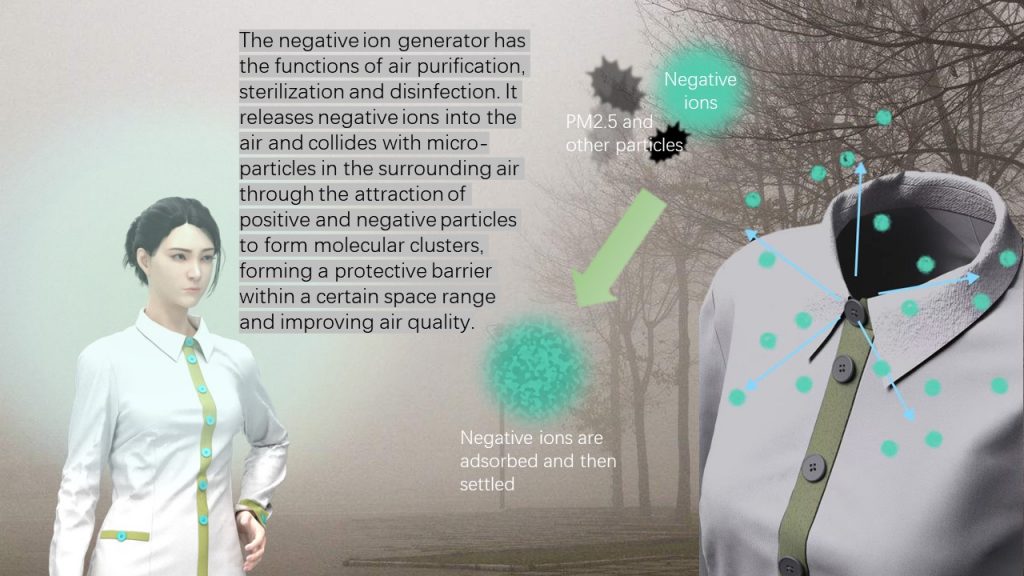In order to realize convenient operation, low cost, and green and efficient energy collection of fabrics, we choose to use 2D material, single-layer nano-material MoS2. 2D nanomaterials is a kind of stable materials with less thickness and large plane size represented by graphene. In 2014, Zhonglin Wang and others first confirmed through experiments that the single-layer MoS2 has piezoelectric effect, and the voltage output decreases with the increase of the odd number of layers. There is almost no such phenomenon in the even number of layers. Later, he made the MoS2 thin film into a nano-scale flexible piezoelectric device of 5 nm* 10 nm.
So we use the piezoelectric effect of odd-numbered MoS2 as a breakthrough: single-layer MoS2 is a three-atom lamellar structure connected by covalent bonds. There is a layer of Mo atom sandwiched between the two layers of S atoms. When it is an odd-numbered layer, the asymmetric center of the material is affected by external force, which will form an electric field due to the polarization effect, so that the electrons in it move in the opposite direction to achieve carrier separation. In the fabric, we synthesize odd layers of MoS2 corresponding to various fabrics by a more conventional hydrothermal method and embed them in the fabric fiber, so that the fabric will generate shock piezoelectric voltage and current during the deformation process such as tensile friction under the action of external forces in this area.
Under the action of external forces, due to the small volume of nano-materials and low energy conversion loss, in people’s daily activities, a piece of clothing can generate a large amount of electric energy with the superposition of time, so we need to face the problem of energy storage. We learned that a kind of battery called micro flexible lithium-ion battery has many advantages: light and thin, large capacity, low price of raw materials and rich resources, green and environmental, etc. Using integrated electrode materials, unlike conventional batteries, there are adhesives, conductive agents, collectors and battery separators, with simple process and high conductivity. The appearance of polymer encapsulated bag is very lightweight. The integrated electrode material has a small size and is composed of nano-level components, which can expose more active sites, improve conductivity, reduce energy loss in the process of energy conversion, and achieve small volume and high capacity.
As a result, we fixed the tiny flexible lithium-ion battery wrapped with insulating and waterproof materials in the neckline, placket and other parts of the clothing that need to be glued in the process, which can not only play a role in shaping the support of the clothing, but also provide electric energy storage under the premise of comfort.
In order to realize the stable and efficient energy transmission between the collected electric energy and the nano-battery button, while maintaining the comfort of the fabric, we decided to use the carbon nanotube spandex composite wire, which uses the spandex with excellent elasticity as the base, and winds the carbon nanotube film with good conductivity and flexibility on the spandex with different coating angles and layers, by adjusting the number of overlapping layers of the carbon nanotube film The coating angle and the use of polyaniline and nano-silver wire as the sandwich layers have little change in resistivity, and the change rate of resistance is only 0.71% under the condition of 45% stretching, which is very stable.
Through this material, the embedded MoS2 nanofiber cloth block and flexible lithium-ion battery are connected to solve the problem of directional and stable transmission of electric energy.
The conversion of human kinetic energy into electric energy and the storage of electric energy have been initially solved. Next, we will use the generated electric energy in two directions.
The first direction: when someone goes out wearing these clothes, the electric energy generated at any time and place can be used to purify the surrounding air. Based on this assumption, we think of the negative ion generator, which has been used for many years and is mature in the micro and wearable fields. Because there is no flexible method yet, we have designed and installed a miniature negative ion generator in the button. The negative ion generator has the functions of air purification, sterilization, disinfection, etc., as the negative ion release terminal, A small part of electric energy stored by flexible Li-ion batteries is used to release negative ions into the air. Negative ions collide with PM2.5 and other micro-particles in the air around clothing through positive and negative particle attraction, forming molecular clusters falling, forming a protective barrier within a certain space range, and improving air quality. This effectively avoids the harm to human body caused by various kinds of microorganism and bacteria contained in the micro-particles, and also provides a good air environment for some people with respiratory diseases and allergies, or improving the travel experience.
The second direction is to use most of the remaining stored energy for the charging of small electronic devices. We also designed a button, which is located on the outside of the pocket to facilitate the charging of mobile phones and other electronic devices when going out. At the same time, it is connected with flexible lithium-ion batteries through nanotubes as the output port for most of the power utilization. This button needs to use the principle of electromagnetic induction to realize energy transmission through energy coupling of the coil. The electronic equipment in the pocket generates electromagnetic induction in the alternating magnetic field, effectively using the electrical energy generated by the fabric, and realizing wireless charging.
This scheme fully collects all kinds of energy generated by the human body at all times when wearing, and makes it possible to use renewable energy as the power and convert it into electric energy for various purposes. Besides, raw materials and conversion process are safe and green, which can also improve the atmospheric environment and ensure human health to a certain extent and appealed to the society: “Pay attention to our atmosphere and energy in the corner.”
Engershe is a green energy solution via new material fashion design. It aims to convert the kinetic energy of human body into electric energy and make effective use of it.
This study is based on the kinetic energy of the human body and draw fellow questions:
1) How to convert various kinetic energy of human body into electric energy?
2) How can this kind of clothing be functional and comfortable?
3) How can the converted electric energy be used in life?

